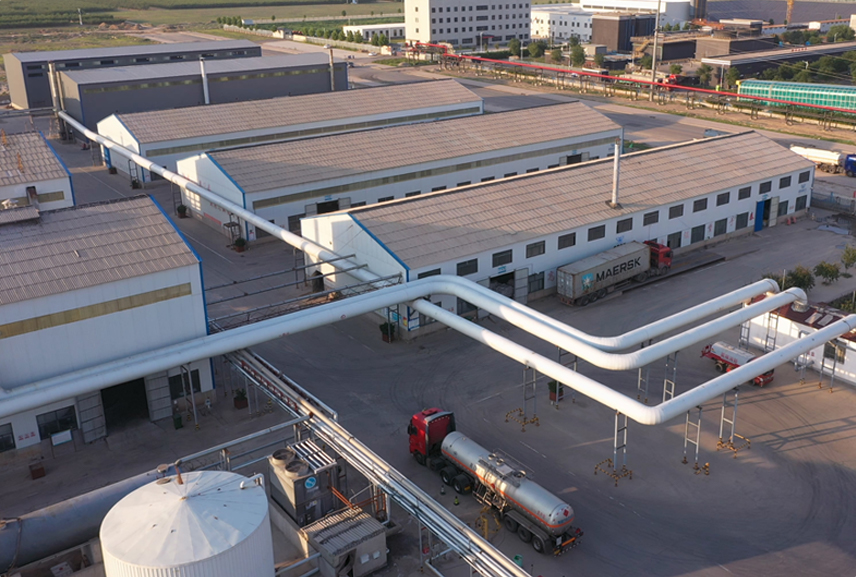Wall putty, also known as degreasing paint. This is a material used for preparing and smoothing walls before painting. Hydroxypropyl methylcellulose is a commonly used raw material in interior wall putty powder. It can greatly improve the smoothness and anti-sagging properties of construction, improve wettability, improve the anti-slip properties of putty, improve the leveling effect of putty, and improve construction efficiency.
Product Details
Hydroxypropyl methylcellulose (HPMC) is a non-ionic cellulose ether made from natural macromolecular material cellulose through a series of chemical processes. Hydroxypropyl methylcellulose (HPMC) is an odorless, tasteless, non-toxic white powder that can be dissolved in cold water to form a transparent viscous solution. It has the functions of thickening, bonding, dispersing, emulsifying, film-forming, suspending, adsorbing, gelling, surface activity, water retention, and protective colloids.
Instant-soluble HPMC in elastic interior wall water-resistant putty paste has the characteristics of easier scraping, easy scraping, no need for grinding, easy polishing, light collection, and calendering. The coating is white and delicate, and the hand feel is smooth, similar to Chinese porcelain. HPMC has good lubrication properties and can significantly improve the construction performance of putty powder, making the construction process smoother. It can also reduce dust generation during construction and improve construction efficiency.
By improving the water retention and thickening properties of putty powder, HPMC can help the putty surface to fully harden and smoothen, thereby improving the quality and durability of the putty surface and making the putty layer more solid and beautiful.
Standard
| Item | Unit | Standard Specifications |
| Appearance | / | White powder,free flowing |
| Loss on drying | % | 4-6 |
| Residue | % | 3.5 |
| Methyl | % | 49-26 |
| Hydroxypropyl | % | 7-14 |
| Ph value(25C) | / | 6-8.5(neutral) |
| Gel temperature | ℃ | 60 degree/75 degree |
| degree of fineness | mesh | 100 mesh,>96%80 mesh,>100% |
| Apparent density | g/m3 | 0.4-0.6 |
| proportion | g/L | 420-520 |
| Surface Tension(2%solution) | dyn/cm | 42-56 |
| Water retention | % | ≥92 |
| Light Transmittance | % | 65-90 |
| Carbonization temperature | ℃ | 280-300 |
| Discoloration temperature | ℃ | 190-200 |
Packaging and Shipping
Packaging and storage: 25 kg/bag
FAQ
Regarding the relationship between viscosity and temperature in HPMC (HPMC viscosity), what should be noted in practical applications?
What are the differences between HPMC and MC?
What are the formulations for interior and exterior wall putty powder?
What is the application of HPMC in putty powder, and what causes the formation of bubbles in putty powder?

Related Products

Get in Touch
Interested in how our HPMC can enhance your personal care formulations? Contact us to request a free sample and experience the superior quality of our cellulose ether products.
Related News and Blogs
24
Aug., 2024
Let's meet Indonesia Coatings Exhibition 2024
The 10th Paintistanbul & Turkcoat Fair will be held at the Istanbul Exhibition Center in Turkey from May 8th...
19
Nov., 2021
What Causes A Cracked Putty Layer?
The one-off scraping thickness of the putty is directly proportional to the curing shrinkage strength, which increases in proportion to the tendency of the putty to crack.
04
Nov., 2021
Whether you are carrying out small repairs or building walls, knowing how to mix the mortar needs to be precise. If the mortar is too dry, the blocks will not stick together properly. If it is too wet, flowing mortar can spill out of the joints, resulting in wasted time and materials for clean-up.
25
Oct., 2021
The Effect of Winter Construction Temperature on Tile Adhesives
As we all know, tile adhesive is generally made from cement and mixed with various additives. It is mixed with water at the construction site and then applied to the wall or floor.

Get in Touch
Interested in how our HPMC can enhance your personal care formulations? Contact us to request a free sample and experience the superior quality of our cellulose ether products.